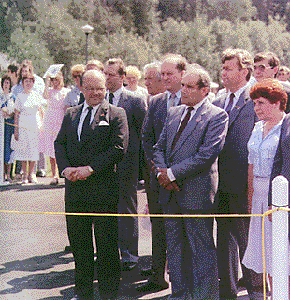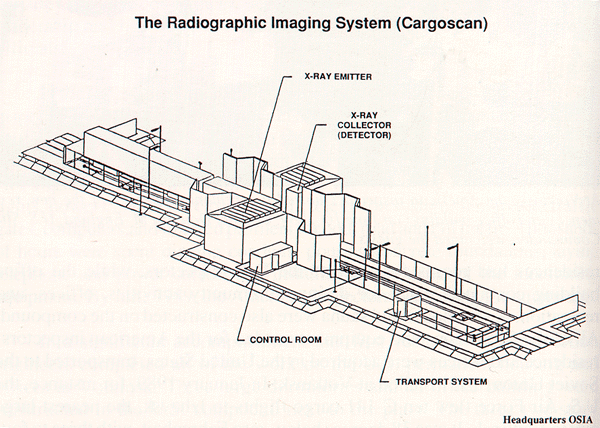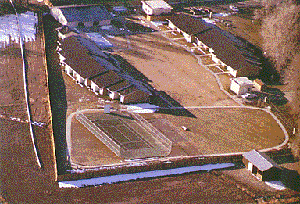| The
American celebration on June 10, 1989, at Votkinsk was an
open house. At two o'clock the doors of every building
were opened and the American inspectors showed their
Soviet guests their new residence and office complex.
More than 200 people attended. Colonel Englund, in his
welcoming remarks, said, "When I first arrived in
Votkinsk in May of last year, this place was an empty
field. Today, when much has been done by both sides, we
are opening the beautifully built living complex and
inspection workplace. The labor put into this, as you can
see, is of the highest quality and reflects the serious
attention of both sides towards the fulfillment of the
Treaty."31 Ambassador
Matlock echoed some of the same themes in his remarks:
"We are grateful to the Soviet builders for their
good work. The opening of the village. . .shows everyone
that a very serious treaty for the destruction of
missiles is being carried out. Conscientious fulfillment
of one treaty breeds trust, which aids in resolving many
contentious questions in all areas."32 V. G. Tolmachev,
director of the Votkinsk Machine Building Plant,
responded by pointing out that at the portal of the
factory "two governments [were] reconstructed here
in miniature."33
Finally, General Major Medvedev, director of the
Soviet Union's Nuclear Risk Reduction Center, thanked the
INF inspectors for their American hospitality and cast
the event into the context of recent history: "Two
years ago, few people on earth would have suggested that
in Votkinsk or in Magna, near the gates of missile
factories, groups of specialists would observe the exit
of products. . . . Nevertheless, today is a
reality."34
|
|

At the Votkinsk ceremony opening the American
compound, U.S. Ambassador Jack F. Matlock stood with V.G.
Tolmachev, Plant Manager, General Medvedev, NRRC
Director, and other Soviet officials. |


